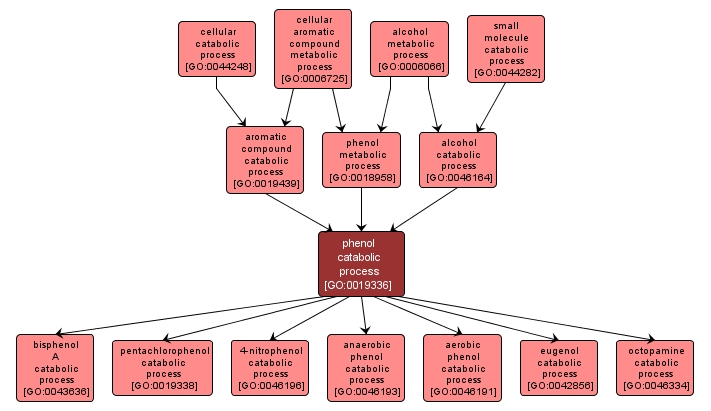GO TERM SUMMARY
|
| Name: |
phenol catabolic process |
| Acc: |
GO:0019336 |
| Aspect: |
Biological Process |
| Desc: |
The chemical reactions and pathways resulting in the breakdown of a phenol, any compound containing one or more hydroxyl groups directly attached to an aromatic carbon ring. |
Synonyms:
- carbolic acid catabolism
- hydroxybenzene catabolic process
- phenol breakdown
- hydroxybenzene catabolism
- phenol catabolism
- carbolic acid catabolic process
- phenol degradation
|
|

|
INTERACTIVE GO GRAPH
|














